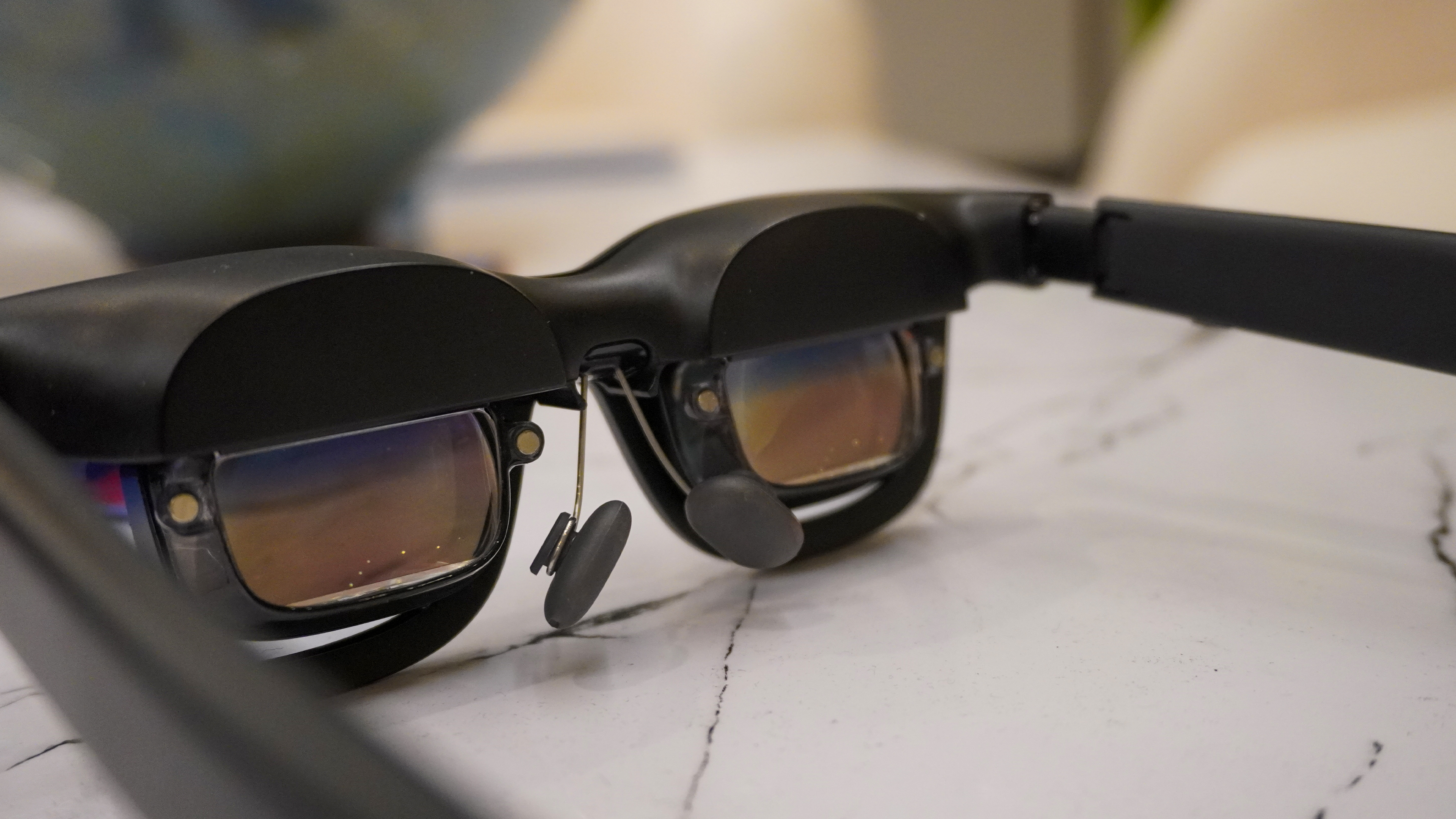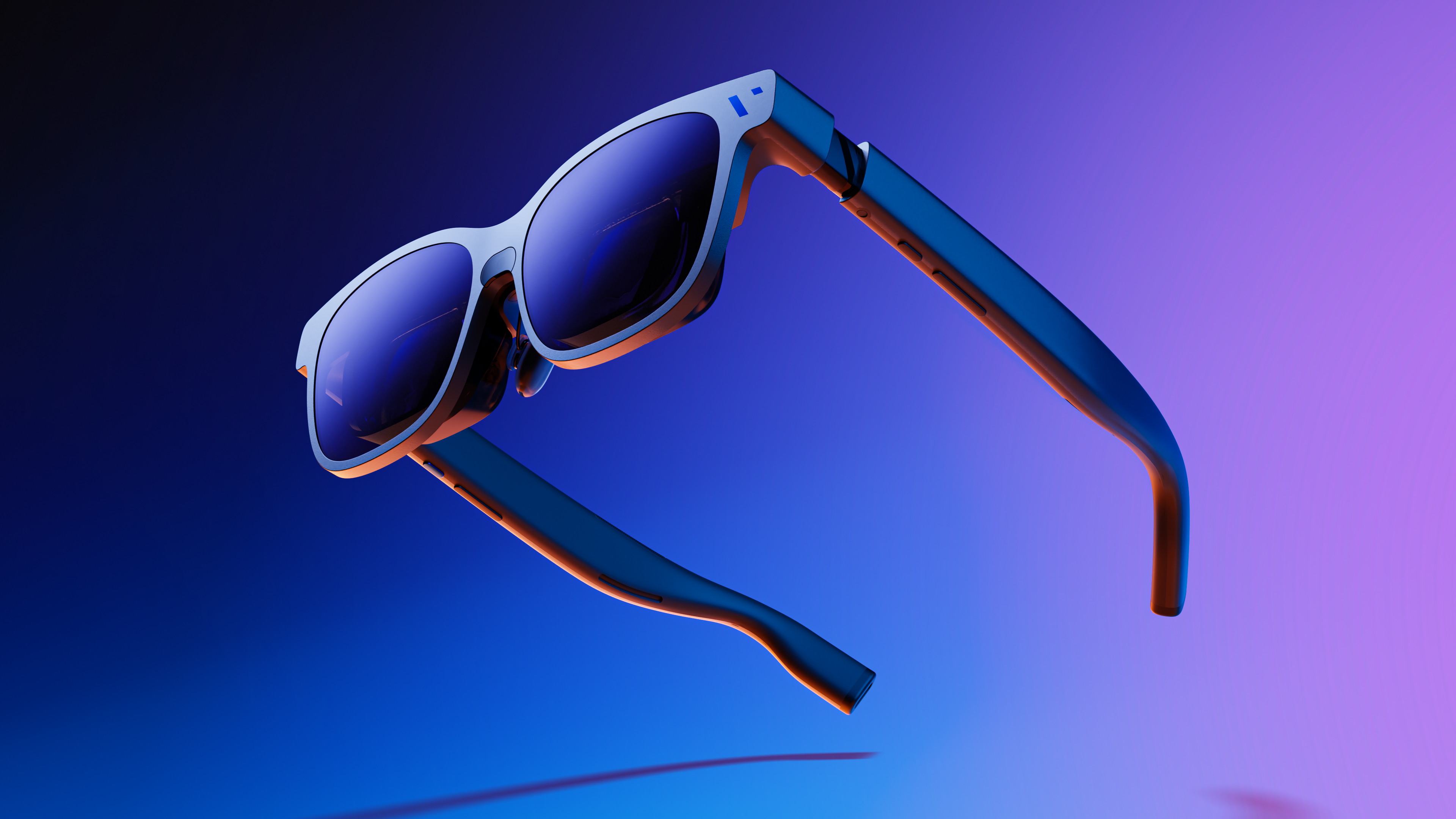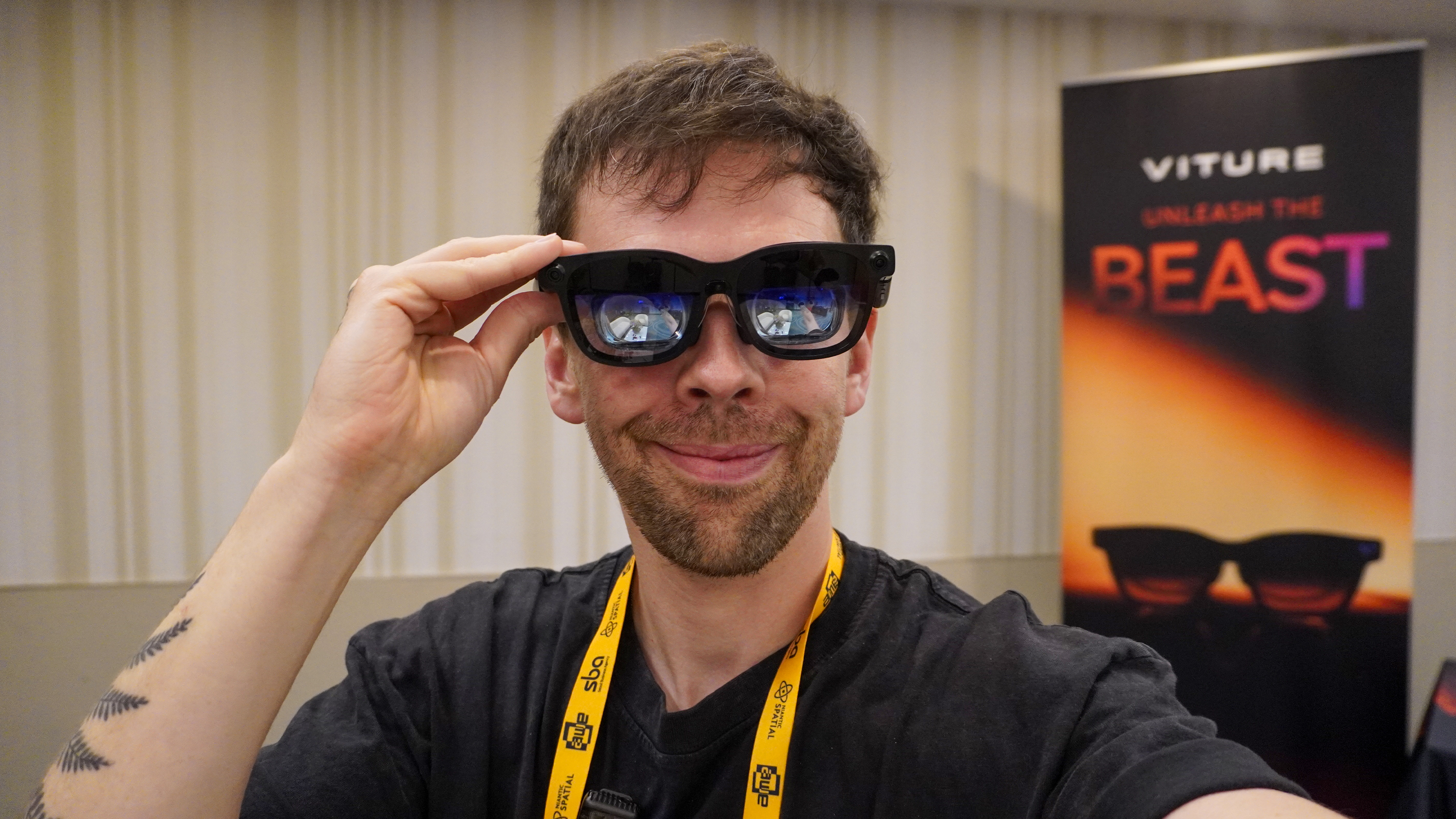The news is out. Viture’s not only launching one pair of AR glasses, the company’s dropping four. There’s the entry-level Luma, the Luma Pro (launching today), the business-focused Luma Ultra and what we’re talking about here — the Viture Beast.
Yes, these are the ones I teased a few weeks back, and which I gave best of show to at AWE 2025. But now I can talk properly about my experience, share some more pictures of what I saw, and address one key spec change you may have noticed here compared to what I found in California.
Now, with these launching in October for $549, one question is obvious: should you wait for these or just grab the Xreal one Pro and be done with it? Let's talk about it.
A giant step forward

So let’s get the obvious out the way — this is the best screen I’ve seen on a pair of AR glasses you’ll be able to buy. That 1200p picture with Viture tuning to a consistent sharpness across the whole display makes for impressive clarity with mesmerizing color.
But I know what people are immediately thinking here: I said 60-degrees field of view a few weeks ago, so why is it now 58? Viture made this choice to ensure sharpness across the screen, even though the optical system can support 60.
Will you notice the difference? In my experience, I doubt it. The differentials have to be 5 degrees or more to really notice the wideness change. But this explains what’s going on here, as it’s a lower number than I saw in person.
And then, à la Xreal One Pro, you’re getting built-in screen customization with 3DoF tracking (6DoF tracking via the front camera coming further down the line). The options available are far more vast, too — not just horizontal ultrawide, but also vertical, alongside multiple screen sizes and something called “ambient mode.” Not 100% sure what this is, but excited to find out.
Also, a shoutout to using a USB-C port on the glasses themselves. Viture’s use of a magnetic port is sleek and all, but proprietary sockets always bug me a little bit. So to get a traditional port means you’re not locked to buying specific cables if you need a replacement.
One drawback

That’s not to say there are a couple hitches to point out here. Viture’s trademark benefit has been the hardware myopia adjustment dials, but with the Viture beast, these are non-existent.
Asking Viture, we found out something interesting — having hardware-level 3DoF tracking is directly at odds with having myopia adjustment, as the mechanisms can mess up tracking accuracy and optical stability.
So with the Beast, the company prioritized spatial breadth of the picture. If myopia tweaking is critical, then Luma is the way to go right now.
Outlook
And that’s the tale of the tape. A big screen experience at a price that is $100 less than the Xreal One Pros with the Viture Beast at $549. It’s exciting to see these two companies continue to push one another forward in innovation, as at the end of the day, we win when this happens.
I’m definitely intrigued to test these properly on some long-haul trips and around my home — to see just how that wider field of view truly comes into play for the cinema experience on a plane, or the ultrawide monitor for productivity.
If you do need myopia adjustment, you’re out of luck here. But if you’re looking for the best of the best in picture quality, then I’d say hold off for just a little longer.
More from Tom's Guide
- I let smart glasses read my emotions and watch what I eat — and now I can’t unsee the future
- I got the inside scoop on Snap Specs from the hardware VP — here's what you need to know about the new smart glasses
- I was wrong — Oakley's Meta smart glasses actually look better than the Ray-Bans, and they bring massive upgrades
.png)












 English (US) ·
English (US) ·